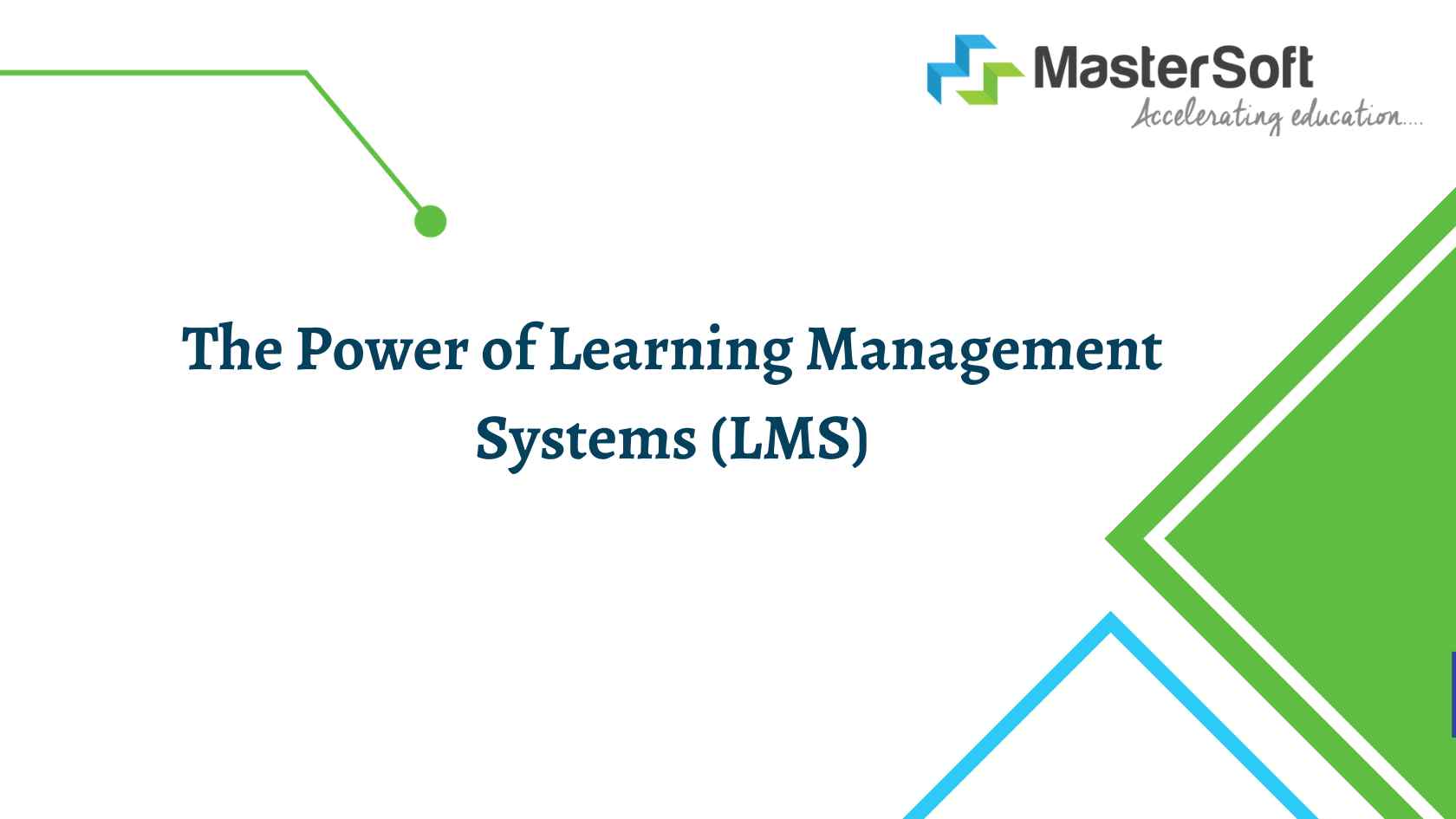In the fast-paced world of education, the demand for flexible and efficient learning solutions is higher than ever. This demand has given rise to Learning Management Systems (LMS), a powerful tool for educators, students, and institutions. LMS platforms are transforming the educational landscape by offering a host of benefits, from streamlined content delivery to enhanced engagement and assessment.
The Educational Landscape of Today
Education is evolving at a rapid pace. Traditional classroom-based learning is no longer the sole means of acquiring knowledge. With the advent of technology and the internet, digital learning has become a vital component of modern education. Learning Management Systems have emerged as a dynamic solution to cater to the diverse needs of learners and educators.
The Power of Learning Management Systems (LMS)
Learning Management Systems, commonly known as LMS, are web-based platforms designed to facilitate, manage, and optimize the learning and training process. They offer educators, learners, and administrators a versatile set of tools and features that streamline content delivery, assessment, and the overall learning experience.
Benefits of Learning Management Systems (LMS)
Learning Management Systems are known for their diverse range of advantages that cater to the educational ecosystem. Let’s explore these benefits in detail:
1. Centralized Learning Hub
LMS platforms provide a centralized location for all educational resources. This includes course materials, assignments, quizzes, and other learning resources. This centralization enhances organization and simplifies access for learners.
2. Flexibility in Learning
LMS platforms offer flexibility in terms of when and where learning can take place. Students and learners can access course content at their own convenience, reducing time and location constraints.
3. Efficient Content Delivery
LMS systems enable educators to create and deliver engaging, multimedia-rich content. They can incorporate videos, interactive assessments, and other multimedia elements to enhance the learning experience.
4. Enhanced Collaboration
LMS platforms facilitate collaboration between learners and educators. Discussion forums, chat rooms, and collaborative assignments promote interaction and peer-to-peer learning.
5. Personalized Learning
LMS platforms can adapt to individual learning needs. They offer personalized learning paths, assessments, and content recommendations based on learner progress and performance.
6. Assessment and Analytics
LMS platforms provide tools for creating and grading assessments, quizzes, and assignments. They also generate detailed analytics, giving educators insights into learner progress and areas for improvement.
7. Cost Savings
By reducing the need for physical learning materials and streamlining administrative processes, LMS platforms contribute to significant cost savings for educational institutions.
8. Scalability
LMS platforms can easily accommodate growing numbers of users. This scalability is vital for institutions experiencing increased enrollment or shifting to online learning.
Features of Learning Management Systems (LMS)
To fully harness the potential of Learning Management Systems, it’s essential to understand their key features:
1. Course Creation and Management
LMS platforms allow educators to create, organize, and manage courses. They can structure course content, set objectives, and establish assessment criteria.
2. Content Delivery
LMS platforms offer a variety of tools to deliver content, including videos, presentations, and documents. This flexibility accommodates various learning styles.
3. Assessment and Feedback
LMS platforms enable educators to create quizzes, assignments, and exams. They also offer grading and feedback mechanisms for assessing learner performance.
4. Collaboration and Communication
Interactive features such as discussion forums, chat rooms, and messaging systems promote communication and collaboration among learners and educators.
5. Analytics and Reporting
LMS platforms generate reports and analytics on learner progress, enabling educators to make data-driven decisions and tailor instruction accordingly.
6. Integration
Many LMS platforms integrate with external applications, including video conferencing tools, content authoring software, and learning analytics platforms.
7. Mobile Compatibility
LMS platforms often offer mobile apps or responsive design, allowing learners to access content on a variety of devices.
Implementing Learning Management Systems (LMS)
Implementing an LMS requires careful planning and consideration. Here are the key steps for a successful implementation:
1. Needs Assessment
Conduct a needs assessment to determine the specific requirements of your educational institution. Consider factors such as the number of users, types of courses, and available technical resources.
2. Platform Selection
Choose an LMS platform that aligns with your institution’s needs and goals. Evaluate factors such as ease of use, scalability, security features, and customer support.
3. Content Migration
Migrate existing content to the LMS platform, including course materials, assessments, and resources. Ensure that the content is organized and accessible to learners.
4. Training and Support
Provide training and support to educators and learners to ensure they are proficient in using the LMS platform. This training is crucial for a smooth transition.
5. Pilot Testing
Conduct pilot testing with a small group of users to identify and address any issues or challenges before full-scale implementation.
6. Rollout
Gradually roll out the LMS platform to all users. Communicate the changes and provide ongoing support to address any concerns or questions.
7. Evaluation and Improvement
Continuously evaluate the LMS platform’s effectiveness and gather feedback from users. Use this information to make improvements and adjustment
LMS Implementation Best Practices
Implementing a Learning Management System (LMS) can be a transformative step for educational institutions. To ensure a successful transition and optimize the benefits of an LMS, several best practices should be considered:
1. Collaborative Planning
Engage educators, administrators, and IT professionals in collaborative planning. Their combined expertise will help create a comprehensive implementation strategy that addresses the specific needs of your institution.
2. Clear Objectives
Set clear and measurable objectives for the LMS implementation. What do you want to achieve with the platform? Are you aiming to improve learner engagement, streamline content delivery, or enhance assessment methods? Clear objectives will guide the implementation process.
3. Content Alignment
Ensure that the content available on the LMS aligns with your educational goals. Content should be organized, up to date, and relevant to the courses and programs being offered. Consider content creation or curation strategies.
4. User Training
Comprehensive training for educators, learners, and support staff is essential. Provide both basic and advanced training sessions to ensure all users can effectively navigate and utilize the LMS. Consider offering ongoing training and support as new features are introduced.
5. Accessibility
Pay attention to accessibility standards, ensuring that the LMS is usable by all learners, including those with disabilities. This is not only a best practice but also a legal requirement in many regions.
6. Data Security
Implement robust data security measures to protect sensitive information, including student data. Compliance with data protection regulations is crucial. Regular security audits and updates are essential.
7. Customization
Most LMS platforms offer customization options. Tailor the platform to match your institution’s branding and to create a consistent, familiar experience for users. Customization can also help in enhancing engagement.
8. Continuous Evaluation
Regularly evaluate the LMS’s performance, gather feedback from users, and use data analytics to make data-driven decisions. Continual improvements will ensure that the LMS remains effective and aligned with your institution’s goals.
9. Technical Support
Provide reliable technical support to assist users in case of issues or questions. A responsive support system ensures that users can address challenges promptly, reducing frustration and enhancing the user experience.
Case Study: Successful LMS Implementation at University
To illustrate the benefits of LMS and the successful implementation process, let’s explore a case study involving University:
Background: University is a mid-sized institution that serves both traditional and online students. Facing the challenge of managing course content and assessments for a growing student population, the university decided to implement an LMS.
Implementation Steps:
- Needs Assessment: The university conducted a thorough needs assessment involving faculty, students, and IT experts to determine the specific requirements of the LMS. They identified the need for centralized content management, enhanced communication tools, and scalable infrastructure.
- Platform Selection: After evaluating various LMS platforms, University selected an LMS that offered a user-friendly interface, robust customization options, and scalability. The platform aligned with their goals of improving course delivery and assessment methods.
- Content Migration: The university initiated content migration by digitizing course materials, assessments, and resources. The process involved reorganizing content into the new LMS, ensuring easy access for students.
- Training and Support: To ensure a smooth transition, University provided comprehensive training for faculty and students. Workshops, video tutorials, and ongoing support were made available to address any issues.
- Pilot Testing: Before full-scale implementation, a pilot program was conducted with a select group of courses. This allowed the university to identify and address any issues or adjustments required.
- Rollout: Following the successful pilot program, the LMS was gradually rolled out to the entire student body. Clear communication and support were provided throughout the transition.
- Evaluation and Improvement: The university continuously monitored the LMS’s performance and gathered feedback from faculty and students. Data analytics were used to identify areas for improvement, resulting in periodic updates to the platform.
Results:
The implementation of the LMS at University yielded significant benefits:
- Centralized content management streamlined access to course materials and assessments.
- Flexibility in learning allowed both on-campus and online students to access content at their convenience.
- Enhanced communication tools fostered collaboration between students and faculty.
- Personalized learning paths improved the learning experience for individual students.
- Data analytics provided insights into student progress and allowed for data-driven improvements.





